The Netaji Mystery: Marking the End of Another ‘Baba’ Story
It is not surprising that among the stories mystifying Netaji Subhas Chandra Bose's death, the 'Baba' stories appealed more to the people than any others. India being the land of sadhus and mystics it is but natural that people would like to believe that their immortal Netaji would lead an eternal life in the form of a sadhu.
It is now a year old that the last of the ‘Baba story’ got rejected officially. On December 16, the chief minister of Uttar Pradesh signed the Action Taken Report and placed in the assembly, the government’s acceptance (स्वीकार) of the cabinet’s approval (अनुमोदन) to the findings of the Justice Sahai Commission of Inquiry. The report stated that Gumnami-baba was a “follower of Netaji”, i.e. Gumnami-baba was not Netaji.
The commission was set up in 2016 on the order of the Allahabad high court, to identify a mysterious sadhu whom some believed to be Netaji, who died at Faizabad on September 16, 1985.
Gumnami-baba was not the first or only sadhu who was portrayed as Netaji by the claimants who believed that Netaji did not die in a plane crash at Formosa in 1945.
The Saulmari sadhu
In 1959, a sadhu at Saulmari in Cooch Behar district of north West Bengal was probably the first to be canvassed as Netaji in disguise. His given name was Saradananda-ji, commonly known as Saulmari sadhu. The belief and inquisitiveness of a large number of people became so strong that in early-60s the central government was forced to send an investigation team to find out the truth. Though the Sadhu himself declared in the latter half of the 60s that he was not Netaji, his followers continued to insist that he was none other than Netaji himself. In 1973, the sadhu reportedly shifted base to Dehradun, where he died in 1977.

Photos: Author provided
The existence of the Saulmari sadhu was one of the reasons for the formation of the Justice Khosla commission of inquiry of 1970-74, the second of its kind, on Netaji’s death and disappearance. However, the commission in its conclusion dismissed the claim that this sadhu was Subhash Chandra Bose in disguise.
The Sheopurkalan story
The next reappearance of Netaji happened in Pandola village in Sheopurkalan district of Madhya Pradesh. It is said that during the days of freedom struggle, a plane crash-landed in a village near Pandola. Among the survivors was a sadhu. The sadhu carried the name of Jyotirdev and started living on the bank of a river nearby. He used to correspond regularly with senior officers and used to go out of the village frequently.

Photo: Author provided
On his death, on May 21, 1977, the police seized all documents left behind by the Sadhu. Jagannath Prosad Gupta of Nagda village of Sheopurkalan, along with four other witnesses testified that Jyotirdev was none other than Netaji. Justice Mukherjee commission of inquiry of 1999-2005, the third of its kind, on Netaji’s death and disappearance, dismissed the claim.
Also read: Solving the Mystery of Netaji's ‘Disappearance’: Part One
Baba Jai Gurudev
In Mathura, Uttar Pradesh, there appeared a self-styled spiritual leader Baba Jai Gurudev who claimed that he was the freedom fighter Netaji. He grew a cult around him named ‘Swadheen Bharat Subhash Sena’. He was, however, badly thrashed by the public in 1975 for claiming to be Netaji Bose. He died in 2012 but the cult continued. They occupied hundreds of acres of government land at Jawahar Park at Mathura for years for the stay of thousands of their activists. On June 2, 2016, they made national headlines when his followers clashed with the police on evictions, which resulted in 29 deaths.
Laldhari Mutya
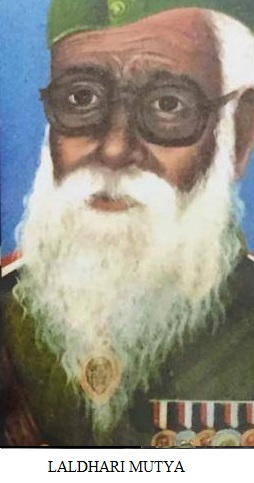
Photo: Author provided
Another ‘Netaji Subhas’ was Laldhari Mutya who set up an ashram near Humnabad, Karnataka. Mutya died in 2001, but his belongings, kept under lock and key, were, by chance, opened in 2016. Out came the ‘Bose belongings’: military uniform, cap, jackets, German-made wristwatch released during the World War I, 1932 model compass and binocular, foreign currency, military badges, etc. etc.
The Ashramites believed that the aged man was Netaji and claim that they were in possession of Mutya’s teeth and hair. They feel a DNA test would establish the true identity of Laldhari Mutya. Osmanabad District Commissioner was apprised of this and it is believed the local MP wrote to the Prime Minister about the new find.
Mouni Baba

Photo: Author Provided
Four deponents to the Mukherjee Commission, claimed Mauni Baba (Sant Samrat Yogi) of Sitapur, was Netaji in disguise. The photograph of the ‘Baba’ they produced “had no similarity whatsoever with Netaji”. Their claim got rejected by the commission.
Santal Dal
Santan Dal guru, Balak Brahmachari said ”Netaji is not only alive, he will return as a world-leader …Not only the India Government but the great worldly regimes know very well Netaji’s whereabouts …But they are unable to do any harm to him as he has achieved the divine grace of ‘Shakti’ through sadhana”, “…50,000 strong Netaji’s Asian Liberation Army will enter the Indian Territory as the saviour …Santal Dal being the part and parcel of that unity will render services on that account.” It is said that this Dal has more than one lakh followers.
Also read: Solving the Mystery of Netaji's ‘Disappearance’: Part Two
PROUT
Prabhat Ranjan Sarkar, founder of ‘Anand Marg’ claimed “actually Subhas boarded another plane which flew him to Siberia. He was hiding there until Sarkar requested him, mentally, to leave the freedom struggle and concentrate rest of his life for spiritual practices. He moved to secret cave in Tibet and Sarkar helped him mentally in the process”.

Photo: Author Provided
According to him Bose learnt ‘Kapalika-sadhana’ and was spiritually very advanced. He developed ‘Prapti Siddhi’ and “could travel anywhere” anytime at will. Sarkar declared that Subhas had a link with the Ananda Marga. One day in 1981-82 Sarkar suddenly informed his followers that “Subhas is not alive anymore.”
Gumnami baba
The most talked about in recent past of all the ‘Baba’-s relates to a sadhu who lived by the given name of Gumnami-baba, in eastern Uttar Pradesh.
The mystic’s story has many versions. One such version says that after Stalin’s death he moved to India at the end of the 1950s. They claim that he had attained the highest form of spiritual power through ‘tantra-sadhana’ that made him transcend physical and formal barriers. Somewhere during this journey, he led Dalai Lama to India who was fleeing Tibet (CIA records say that their Special Activities Division did exactly so in 1959).
Also read: What We Know About the Last Few Days of Netaji Subhas Chandra Bose's Life
He lived incognito to perform some covert activities in Asian countries. He led an Asian Liberation Army which fought in the Korean War of 1952. The Chinese army that attacked India in 1962 was led by him. He wanted to emancipate India from the western influence but Indians could not recognise him, so he ordered the army to retreat. In Vietnam, he was guiding Ho-Chi-Minh in his fight against US imperialism. He went to Paris in 1969 to mediate for the Vietnamese in the ‘Paris Peace Talks’. Before that, he visited Tashkent to help draw up the Tashkent Pact between India and Pakistan on January 10, 1966. Lastly, he turned his attention to his native state and was in north Bengal in 1970-71 guiding the ‘Mukti-joddhas’ in their liberation war for Bangladesh.
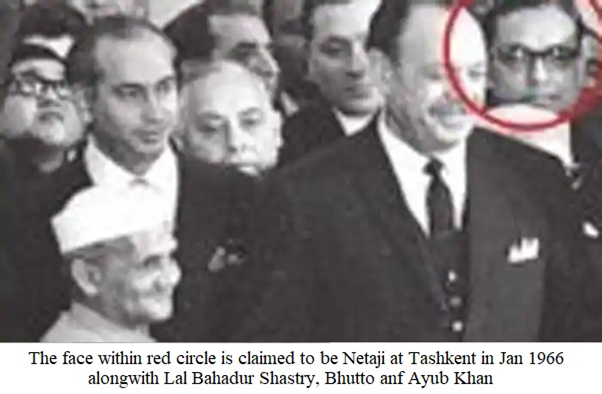
Photo: Author Provided
In India, Gumnami-baba lived in the guise of a sadhu at Naimisharanya, Basti, Ayodhya and Faizabad, where he kept changing places several times and within the city itself. One of his landlords, Gurbax Singh Sodi, took him twice to the Faizabad Civil Court. This information is corroborated by his son Manjit Singh in his deposition to Justice Sahai Commission of Inquiry, set up to identify Gumnami-baba.
Later a journalist, Virendra Kumar Mishra, too lodged a complaint with the police. Gumnami finally settled in an out-house of Ram Bhavan at Faizabad in 1983 where he reportedly died on September 16, 1985, and was cremated two days later on September 18. But there is no proof that any person really died. There is no death certificate, no photograph of the dead body or the people present during cremation and moreover, there is no cremation certificate.
All the above chapters involving Gumnami-baba was not known to people until, 42 days after his supposed death, a local newspaper, Naye Log, said that Gumnami-baba, who died at Faizabad on September 16, was Netaji Subhas.
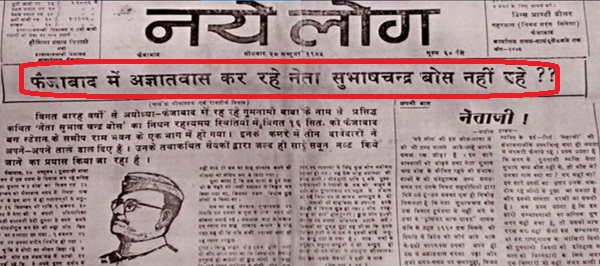
Photo: Author Provided
Alerted by the sensational news of Gumnami-baba being Netaji, another local newspaper, Janmorcha, conducted an inquiry on the issue. They found no evidence of Gumnami being Netaji. Senior journalist Sheetla Singh visited Netaji-associate Pabitra Mohan Roy at Kolkata in November 2985. Roy said:
“We have been visiting every sadhu and mysterious individual in search of Netaji, from Saulmari to Kohima to Punjab. In the same manner, we also visited Babaji at Basti, Faizabad and Ayodhya. But I can say with certainty that he was not Netaji Subhash Chandra Bose.”
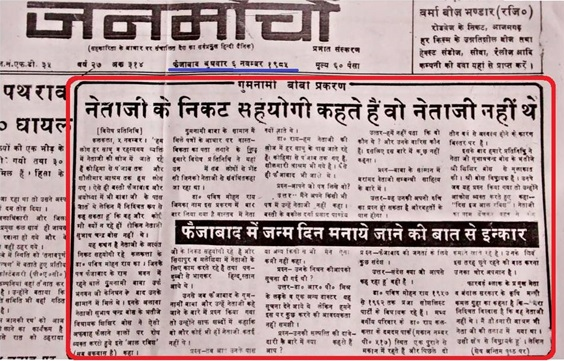
Photo: Author Provided
He also denied celebrating Netaji’s birthdays in Faizabad.
A media war followed. Newspapers in UP, Northern India Patrika, Amrit Prabhat, Sachchi Kahaniya and Swatantra Bharat started bringing out more exciting news on Gumnami-baba. Amrit Prabhat on November 8, 1985, reported:
“…sources in the police said they were investigating whether it was KD Upadhyay [known as Kaptan Baba], a murderer who was hiding in the guise of Netaji’.

Photo: Author Provided
In February 1986, Netaji’s niece Lalita Bose was brought to Faizabad to identify the items found in Gumnami-baba’s room after his death. At first sight, she was overawed and identified some items to be of Netaji’s family. Sceptics say it is quite possible that the baba’s room was filled up by the (2,700+) articles in 25 steel trunks in those 42 days after his death as no one ever saw them during the baba’s lifetime.
On February 10, 1986, along with two other persons, Bose filed a writ petition at the Lucknow bench of the Allahabad high court, to enquire about Gumnami-baba. The case never proceeded. Meanwhile, she passed away. After a lull, in 1997, Swatantra Bharat, Kuberu Times, Sahara and Swatantra Chetna newspapers reported that the Gumnami-baba file had gone missing from the court!
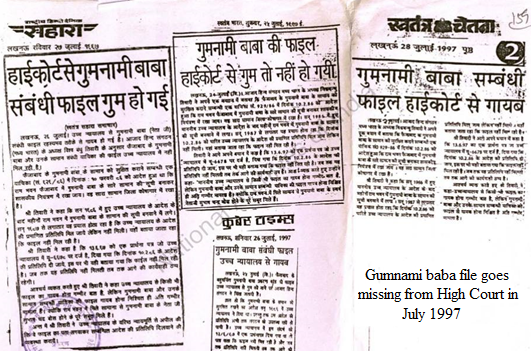
Photo: Author Provided
While these developments were going on in UP, in Kolkata, a publishing house started releasing articles in Bengali claiming Gumnami-baba was Netaji. They published a book detailing many accounts of the said baba, written under a pseudonym. Here Gumnami is portrayed as ‘Mahakal’ who never dies; Mahakal disappears on September 16, 1985.
The JMCI during its course of inquiry, among other possibilities, considered the Gumnami-baba angle.
Also read: Revisiting Events Celebrated by Subhas Chandra Bose's Azad Hind Government
Of the 131 persons who deposed before the Commission, 26 spoke on ‘Gumnami-baba’. The Ccmmission noted that Dr P. Banerjee, one of the Baba’s physicians at Faizabad “did not assert that the saint was Netaji”. His mother-in-law Bithi Chatterjee who was a regular visitor of the Baba, “found it difficult to say whether Gumnami-baba was Netaji”. His wife Rita Banerjee said she “based her claim on her belief only”.
Sunil Kumar Gupta and six others claimed they knew from 1963-67 that Gumnami was Netaji but they could not divulge the fact before as they were under an oath of secrecy. Justice Mukherjee commented, that the explanation given by Gupta that they were under an oath of secrecy against its disclosure “is extremely difficult to rely on, more so when they have now divulged that in spite of that oath”. Justice Mukherjee did not find any merit in the deposition of all the 26.

Photo: Author Provided
Gumnami-baba’s supposed handwriting was examined by the Government Examiner of Questioned Documents in Shimla, and the leading State Forensic Science Laboratory in Kolkata. Both found out that the handwritings do not match Netaji’s. A private expert, however, opined that they were the same. The majority opinion was accepted, as is the procedure.
Gumnami-baba’s teeth failed DNA scrutiny too. Thus, in 2005, Justice Mukherjee dismissed the Gumnami angle completely.
Not to be let down, the Gumnami propagators moved court in 2010 and brought out a judgment in favour of their petition with the high court directing the UP government to establish the identity of Gumnami-baba. Accordingly, the government set up an inquiry commission on June 28, 2016, under the Chairmanship of Justice Vishnu Sahai.
Also read: 'Disappearance' of Netaji: Why We Must Pick up Where the Justice Mukherjee Report Left Off
Hardly 45 people responded to the inquiry. The main propagator admitted, “The very idea that Netaji could have lived secretly, in hiding …in his own country for so long is absolutely repugnant”. The “claims are not supported by anything” and are “unsubstantiated”. On completion of interview and cross-examinations, the commission concluded that the highly publicised and mysterious Gumnami-baba alias Bhagwanji was not freedom fighter Netaji Subhas Chandra Bose. It also said that the identity of Gumnami-baba could not be established. The man was a “follower” of Netaji. The government accepted the findings and the Action Taken Report was placed in the assembly on December 20, 2019.

Photo: Author Provided
Earlier in 2019, there was an attempt to salvage the Gumnami story through a commercial film and by procuring handwriting expert’s opinion. They also raked up a belated DNA issue. But the curtains had already been drawn for last of the ‘Baba’ story.
Two consecutive commissions, Mukherjee and Sahai, declared that Gumnami-baba was not Netaji irrespective of the fact that ten investigations and inquiries held by governments at home, abroad and privately, concluded that Netaji died in a plane crash at Taihoku on August 18, 1945.
Sumeru Roy Chaudhury is an architect graduated from IIT, Kharagpur. He was the chief architect of the CPWD. He has studied the Netaji files and related documents in detail.
This article went live on December twentieth, two thousand twenty, at zero minutes past four in the afternoon.The Wire is now on WhatsApp. Follow our channel for sharp analysis and opinions on the latest developments.




